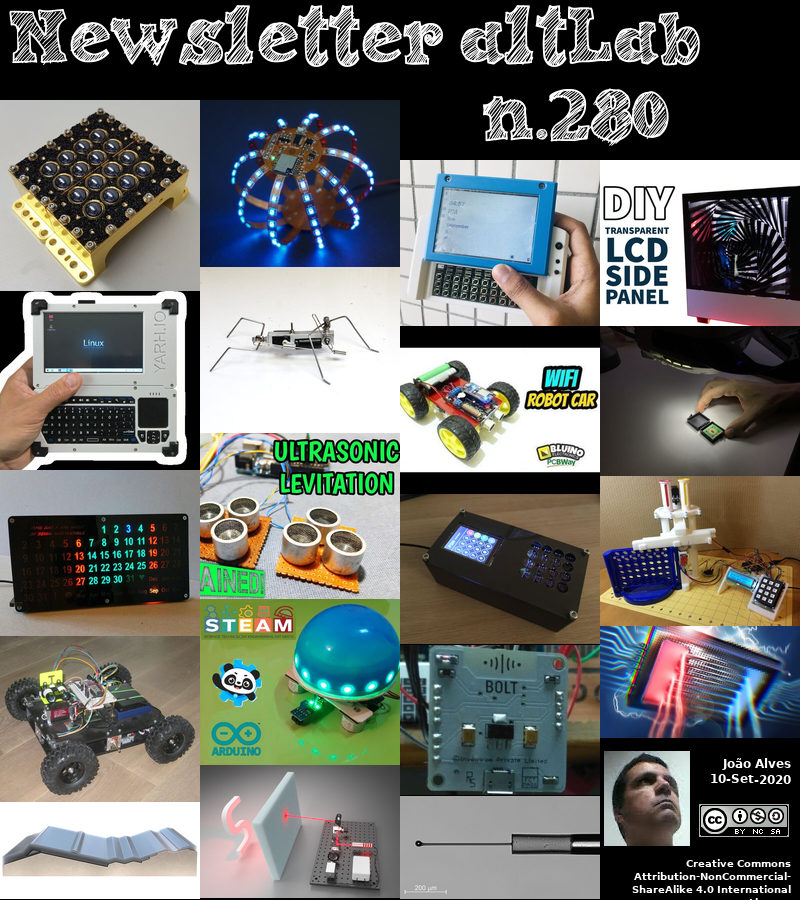2020-09-10 - Nº 280
Editorial
Esta é a Newsletter Nº 280 que se apresenta com o mesmo formato que as anteriores. Se gostar da Newsletter partilhe-a!
Todas as Newsletters encontram-se indexadas no link.
Esta Newsletter tem os seguintes tópicos:
Faz hoje anos que nascia, em 1775, o químico e médico inglês John Kidd. Ele conseguiu obter o naftaleno em 1819, nome que ele cunhou. Foi o primeiro de muitos produtos químicos orgânicos úteis derivados do alcatrão de carvão, o líquido preto espesso resultante do aquecimento do carvão para produzir coque e gás.
Faz também hoje anos que nascia, em 1839, o matemático, lógico e filósofo americano Charles Sanders Peirce. Ele destacou-se pelo seu trabalho sobre a lógica das relações e sobre o pragmatismo como método de pesquisa. Ele foi o primeiro psicólogo experimental moderno nas Américas, o primeiro metrologista a usar um comprimento de onda de luz como unidade de medida, o inventor da projecção quincuncial da esfera, o primeiro criador conhecido do projecto e teoria de um computador de circuito de comutação eléctrico e o fundador da "economia da pesquisa". Ele é o único filósofo construtor de sistemas nas Américas que foi competente e produtivo em lógica, matemática e numa ampla gama de ciências. Ele era filho do matemático de Harvard Benjamin Peirce.
Faz igualmente hoje anos que nascia, em 1857, o astrónomo americano James Edward Keeler. Ele confirmou a teoria de Maxwell de que os anéis de Saturno não eram sólidos (exigindo rotação uniforme), mas compostos de partículas meteóricas (com velocidade de rotação dada pela 3ª lei de Kepler). O seu espectro-grama de 9 de Abril de 1895 dos anéis de Saturno mostrou o deslocamento Doppler indicando a variação da velocidade radial ao longo da fenda. Aos 21 anos, ele observou o eclipse solar de Julho de 1878, com a expedição do Observatório Naval ao Colorado.
Faz também hoje anos que nascia, em 1892, o físico americano Arthur Compton. Ele foi um dos vencedores com C.T.R. Wilson da Inglaterra, do Prémio Nobel de Física (1927) pela sua descoberta e explicação da mudança no comprimento de onda dos raios X quando eles colidem com electrões em metais. Este efeito chamado de efeito Compton é causado pela transferência de energia de um fotão para um único electrão, então um quantum de radiação é re-emitido numa direcção definida pelo electrão, que ao fazer isso deve recuar numa direcção formando um ângulo com o da radiação incidente.
Faz igualmente hoje anos que nascia, em 1898, o engenheiro químico americano Waldo Semon. Ele inventou o PVC plastificado (vinil). Em 1926, ele descobriu como converter cloreto de polivinila de uma substância dura e impraticável numa flexível. Agora é usado em centenas de produtos, como ladrilhos, mangueiras de jardim, imitações de couro, cortinas de casa de banho e revestimentos. É produzido em quantidades maiores do que qualquer outro plástico, com excepção do polietileno. Semon também fez contribuições pioneiras na ciência dos polímeros, incluindo novos anti-oxidantes da borracha. A sua liderança técnica levou à descoberta de três novas famílias de polímeros importantes: poliuretano termoplástico, borracha "natural" sintética e borrachas sintéticas resistentes a óleo.
Por fim, faz hoje anos que nascia, em 1948, o arquitecto de software hungaro-americano Charles Simonyi. Ele é responsável pela criação da notação húngara que é uma convenção de nomenclatura de identificador em programação de computadores, na qual o nome de uma variável ou função indica sua intenção ou classe e, em alguns dialectos, o seu tipo. Ele também é responsável pela criação do paradigma da programação intencional. Este paradigma codifica no código-fonte do software a intenção precisa que os programadores (ou utilizadores) têm em mente ao conceber o seu trabalho. Usando o nível apropriado de abstracção no qual o programador está a pensar, a criação e manutenção de programas de computador torna-se mais fácil. Separando as preocupações com as intenções e como elas estão a ser operadas, o software torna-se mais modular e permite códigos de software mais reutilizáveis.
Em 2008 era ligado pela primeira vez o LHC - Large Hadron Collider. Depois de uma construção que durou a volta de 10 anos foi ligado e o primeiro feixe circulou através do collider na manhã de 10 de Setembro. O CERN disparou com sucesso os protões a volta do túnel em estágios, três quilómetros de cada vez. As partículas foram disparadas no sentido horário no acelerador e contornadas com sucesso às 10:28, horário local. O LHC completou com sucesso seu principal teste: depois de uma série de testes, dois pontos brancos brilharam no ecrã do computador, mostrando que os protões percorreram todo o comprimento do collider. Demorou menos de uma hora para guiar o fluxo de partículas em torno do seu circuito inaugural. De seguida, o CERN enviou com sucesso um feixe de protões no sentido contrário aos ponteiros do relógio, demorando um pouco mais de uma hora e meia devido a um problema com a criogenia, com o circuito completo a ser concluído às 14h59.
Na Newsletter desta semana apresentamos diversas noticias, artigos científicos assim como projetos de maker. É apresentada a revista newelectronics de 8 de Setembro.
 João Alves ([email protected])
João Alves ([email protected])
O conteúdo da Newsletter encontra-se sob a licença  Creative Commons Attribution-NonCommercial-ShareAlike 4.0 International License.
Creative Commons Attribution-NonCommercial-ShareAlike 4.0 International License.
Outras Notícias

Highest performance Arm Cortex-R processor to power the future of computational storage
"There is expected to be more than 79 zettabytes of IoT data in 2025, but the real value of this data is found in the insights it generates. The closer to the data source we can produce these insights the better, because of the improved security, latency and energy efficiency enabled. Computational storage is emerging as a critical piece of the data storage puzzle because it puts processing power directly on the storage device, giving companies secure, quick and easy access to vital information. Our expertise and legacy in storage puts Arm in a strong position to address the changing needs of this market – with around 85% of hard disk drive controllers and solid-state drive controllers based on Arm, we are already a trusted partner for billions of storage devices. Today, we’re announcing Arm Cortex-R82, our first 64-bit, Linux-capable Cortex-R processor designed to accelerate the development and deployment of next-generation enterprise and computational storage solutions. Generating insight where data is stored For processing to take place closer to the data, we needed to deliver higher performance." [...]
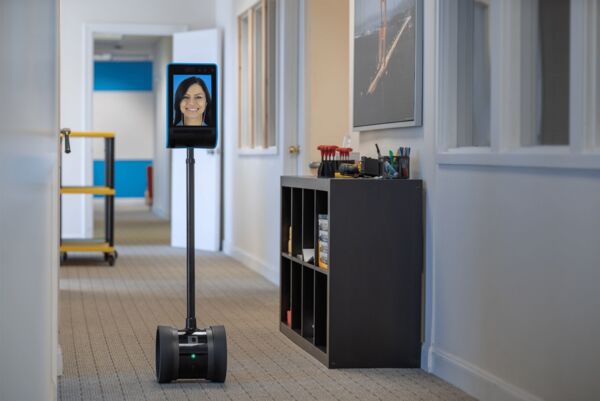
Office Ready? Jetson-Driven ‘Double Robot’ Supports Remote Working
"Apple’s iPad 2 launch in 2011 ignited a touch tablet craze, but when David Cann and Marc DeVidts got their hands on one they saw something different: They rigged it to a remote-controlled golf caddy and posted a video of it in action on YouTube. Next came phone calls from those interested in buying such a telepresence robot. Hacks like this were second nature for the friends who met in 2002 while working on the set of the BattleBots TV series, featuring team-built robots battling before live audiences. That’s how Double Robotics began in 2012. The startup went on to attend YCombinator’s accelerator, and it has sold more than 12,000 units. That cash flow has allowed the small team with just $1.8 million in seed funding to carry on without raising capital, a rarity in hardware." [...]

Renesas Introduces DDR5 Data Buffer for High-Performance Server and Cloud Service Applications
"High-Speed, Low-Power Data Buffer Delivers Improved Speed and Bandwidth for DDR5 DRAM and Storage Class Memory Modules. Renesas Electronics Corporation (TSE:6723), a premier supplier of advanced semiconductor solutions and the industry leader in memory interface products, today announced a new high-speed, low-power DDR5 data buffer for data center, server, and high-performance workstation applications. Advancements over the past few years in real-time analytics, machine learning, HPC, AI, and other memory and bandwidth-hungry applications have fueled explosive growth in server memory bandwidth requirements. The new JEDEC-compliant DDR5 data buffer 5DB0148 from Renesas enables significantly higher speeds and lower latency for load-reduced dual inline memory modules (LRDIMMs) that have become the cornerstone memory technology for this new class of applications. The first generation of DDR5 LRDIMMs based on Renesas components enable a bandwidth increase of more than 35 percent over DDR4 LRDIMMs operating at 3200 MT/s. “As the industry’s complete DDR5 solution provider, we are working closely with customers and ecosystem partners to launch a vastly expanded portfolio of memory solutions into production,” said Rami Sethi, Vice President, Data Center Business Division at Renesas." [...]
Ciência e Tecnologia
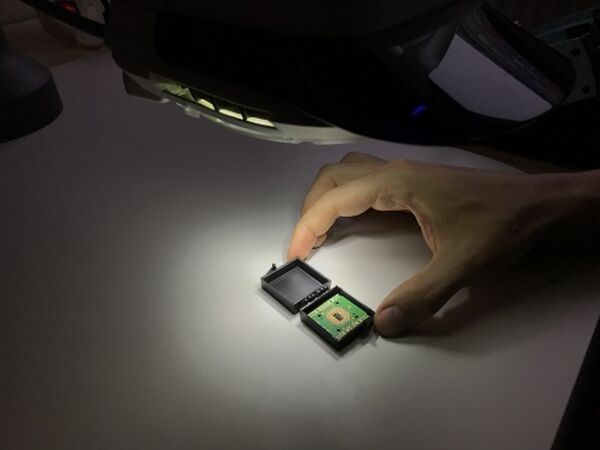
University of Copenhagen researchers realize new platform for future quantum computer
"University of Copenhagen physicists, as part of the University and Microsoft collaboration focused on topological quantum computing, may have unloosed a Gordian knot in quantum computer development. In partnership with researchers from University of Chicago, ETH Zurich, Weizmann Institute of Science, and fellow Microsoft Quantum Lab collaborators at Purdue University, they have designed and realized a promising building block for supercomputers of the future: a two-dimensional platform for that could lead to quantum bits that are both stable and able to be mass produced. Led by two young physicists, Antonio Fornieri and Alex Whiticar, under the supervision of Professor Charles Marcus, Director of Microsoft Quantum Lab Copenhagen, researchers at the Center for Quantum Devices (QDev) a Center of Excellence sponsored by the Danish National Research Foundation at the Niels Bohr Institute, University of Copenhagen, designed, built, and characterized a key component that could cut a Gordian knot in the development of viable quantum computers - specifically, the building block for a quantum bit, or qubit, that is both protected from disturbances and able to be mass produced. Their results have just been published in the scientific journal, Nature. Together with a back-to-back publication from a team at Harvard University on a related system, the Copenhagen team was able to demonstrate Majorana zero modes in the one-dimensional semiconductor gap between two superconductors forming a spatially extended Josephson junction, an effect predicted theoretically by teams at Harvard-Weizmann, and Niels Bohr Institute-Lund University. The wide Josephson junction is part of a complex chip of hybrid superconductor and semiconductor materials grown by Michael Manfra’s Microsoft Quantum Lab group at Purdue." [...]
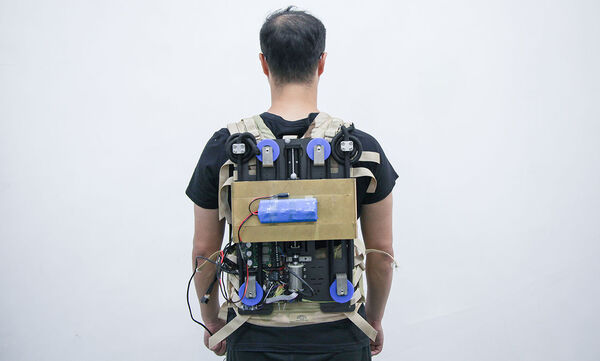
This Motorized Backpack Eases the Burden for Hikers
"By accounting for inertial forces, the new design can reduce the metabolic energy required by the user For backpackers, it’s a treat to escape civilization and traverse through the woods, enjoying the ruggedness of the great outdoors. But carrying that heavy backpack for days can undoubtedly be a drag. One group of researchers in China has some welcome news: an invention aimed at lightening the load. They’ve designed a new backpack that accounts for the inertial forces of the bag against a backpacker’s body as the person walks, reducing the metabolic energy demand on the user by an average of 11 percent. Their design is described in a study published 27 July in IEEE Transactions on Neural Systems and Rehabilitation Engineering. Caihua Xiong, a professor at Huazhong University of Science and Technology who was involved in the study, notes that humans around the world and across the ages have been exploring ways to lighten their loads." [...]

Physicists achieve tunable spin wave excitation
"Physicists from MIPT and the Russian Quantum Center, joined by colleagues from Saratov State University and Michigan Technological University, have demonstrated new methods for controlling spin waves in nanostructured bismuth iron garnet films via short laser pulses. Presented in Nano Letters, the solution has potential for applications in energy-efficient information transfer and spin-based quantum computing. A particle’s spin is its intrinsic angular momentum, which always has a direction. In magnetized materials, the spins all point in one direction. A local disruption of this magnetic order is accompanied by the propagation of spin waves, whose quanta are known as magnons. Unlike the electrical current, spin wave propagation does not involve a transfer of matter." [...]
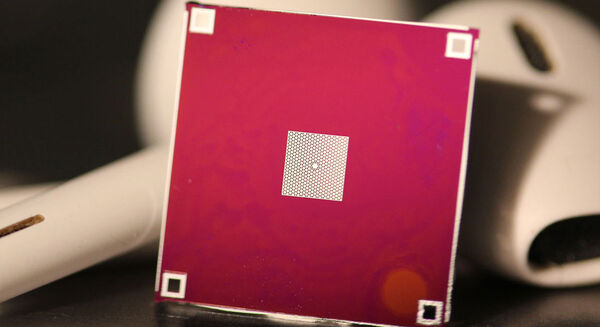
Extracting order from a quantum measurement finally shown experimentally
"In physics, it is essential to be able to show a theoretical assumption in actual, physical experiments. For more than a hundred years, physicists have been aware of the link between the concepts of disorder in a system, and information obtained by measurement. However, a clean experimental assessment of this link in common monitored systems, that is systems which are continuously measured over time, was missing so far. But now, using a “quantum drum”, a vibrating, mechanical membrane, researchers have realized an experimental setup that shows the physical interplay between the disorder and the outcomes of a measurement. A collaboration of experimentalists from the Niels Bohr Institute, University of Copenhagen and theorists at Queen’s University Belfast, and the University of Sao Palo, could show how to extract order from this largely disordered system, providing a general tool to engineer the state of the system, essential for future quantum technologies, like quantum computers. The result is now published in as an Editors’ Suggestion in Physical Review Letters." [...]
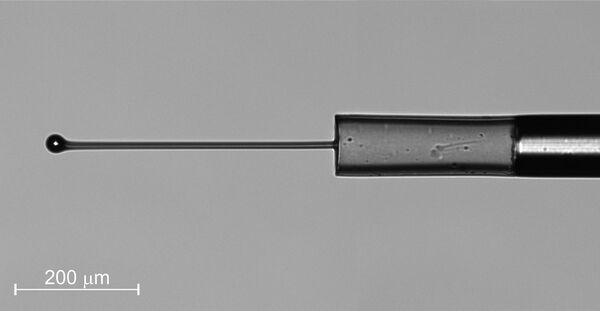
Researchers Make Tiny, Yet Complex Fiber Optic Force Sensor
"Sensitive force measurements made with submillimeter-sized device could be useful for manipulating small objects or measuring liquid surface tension. Researchers have developed a tiny fiber optic force sensor that can measure extremely slight forces exerted by small objects. The new light-based sensor overcomes the limitations of force sensors based on micro-electro-mechanical sensors (MEMS) and could be useful for applications from medical systems to manufacturing. “Applications for force sensing are numerous, but there is a lack of thoroughly miniature and versatile force sensors that can perform force measurements on small objects,” said research team leader Denis Donlagic from the University of Maribor in Slovenia. “Our sensor helps meet this need as one of the smallest and most versatile optical-fiber force sensors designed thus far.” In The Optical Society (OSA) journal Optics Letters, Donlagic and Simon Pevec describe their new sensor, which is made of silica glass formed into a cylinder just 800 microns long and 100 microns in diameter — roughly the same diameter as a human hair. They demonstrate the new sensor’s ability to measure force with a resolution better than a micronewton by using it to measure the stiffness of a dandelion seed or the surface tension of a liquid." [...]
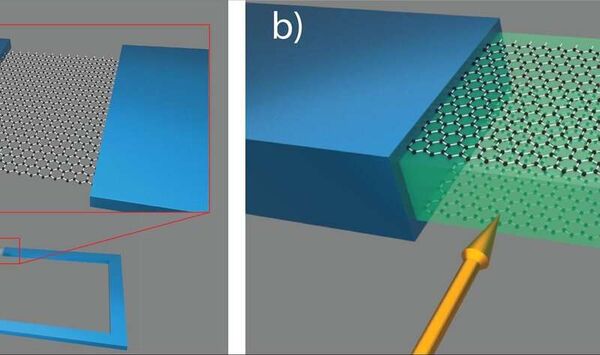
A tiny instrument to measure the faintest magnetic fields
"Physicists at the University of Basel have developed a minuscule instrument able to detect extremely faint magnetic fields. At the heart of the superconducting quantum interference device are two atomically thin layers of graphene, which the researchers combined with boron nitride. Instruments like this one have applications in areas such as medicine, besides being used to research new materials. To measure very small magnetic fields, researchers often use superconducting quantum interference devices, or SQUIDs. In medicine, their uses include monitoring brain or heart activity, for example, while in the earth sciences researchers use SQUIDs to characterize the composition of rocks or detect groundwater flows. The devices also have a broad range of uses in other applied fields and basic research." [...]

Transistor-integrated cooling for a more powerful chip
"EPFL researchers have created a single chip that combines a transistor and micro-fluidic cooling system. Their research, which has been published in Nature, should help save energy and further shrink the size of electronic components. Managing the heat generated in electronics is a huge problem, especially with the constant push to reduce the size and pack as many transistors as possible in the same chip. The whole problem is how to manage such high heat fluxes efficiently. Usually electronic technologies, designed by electrical engineers, and cooling systems, designed by mechanical engineers, are done independently and separately. But now EPFL researchers have quietly revolutionized the process by combining these two design steps into one: they’ve developed an integrated microfluidic cooling technology together with the electronics, that can efficiently manage the large heat fluxes generated by transistors." [...]
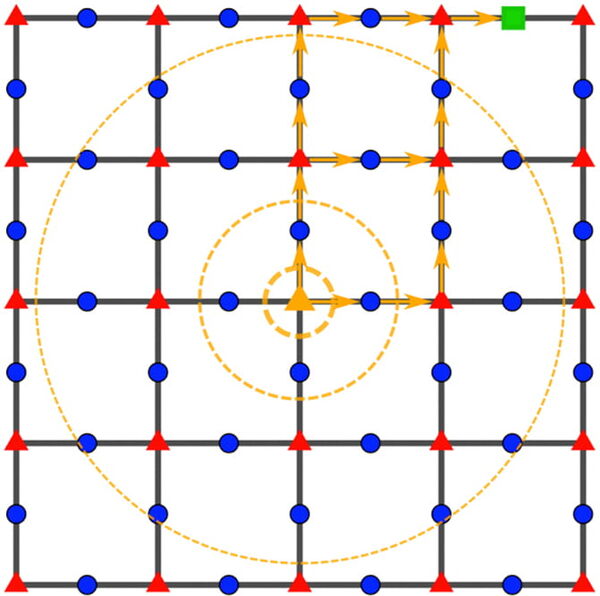
Quantum leap for speed limit bounds
"Rice physicists set far-more-accurate limits on speed of quantum information. Nature’s speed limits aren’t posted on road signs, but Rice University physicists have discovered a new way to deduce them that is better — infinitely better, in some cases — than previous methods. “The big question is, ‘How fast can anything — information, mass, energy — move in nature? '” said Kaden Hazzard, a theoretical quantum physicist at Rice. “It turns out that if somebody hands you a material, it is incredibly difficult, in general, to answer the question.” In a study published today in the American Physical Society journal PRX Quantum, Hazzard and Rice graduate student Zhiyuan Wang describe a new method for calculating the upper bound of speed limits in quantum matter. “At a fundamental level, these bounds are much better than what was previously available,” said Hazzard, an assistant professor of physics and astronomy and member of the Rice Center for Quantum Materials." [...]
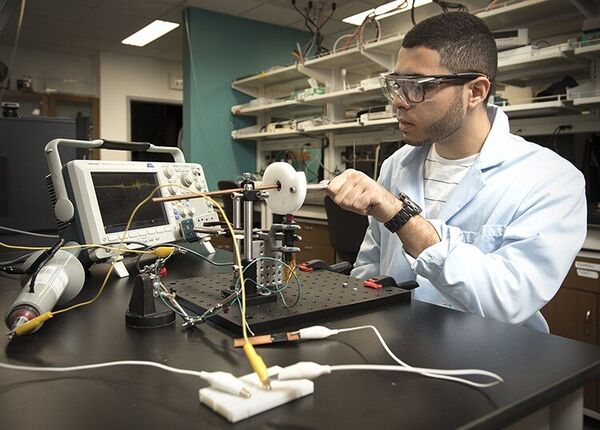
Human/mechanical powered plasma: Researchers help create the future
"Low-temperature plasma device may lead to more efficient engines, use in field medicine and beyond. Low-temperature plasmas offer promise for applications in medicine, water purification, agriculture, pollutant removal, nanomaterial synthesis and more. Yet making these plasmas by conventional methods takes several thousand volts of electricity, says David Go, an aerospace and mechanical engineer at the University of Notre Dame. That limits their use outside high-voltage power settings. In work supported by the U.S. National Science Foundation, Go and a team of researchers conducted research that explores making plasma devices that can be operated without electrical power -- they need only human or mechanical energy. Their paper in Applied Physics Letters introduces a strategy the scientists call "energy-conversion plasma" as an alternative to producing "transient spark" discharges without the need for a very high-voltage power supply." [...]
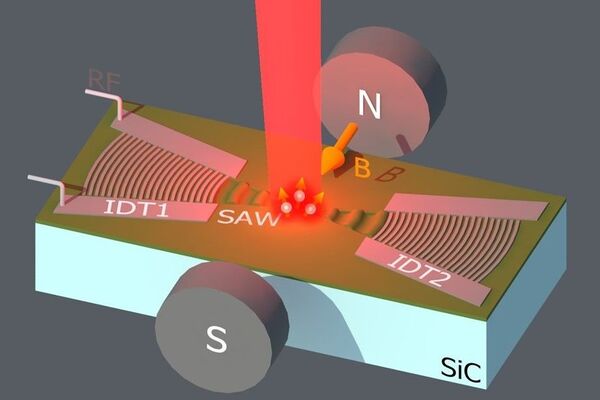
Nanoearthquakes control spin centers in SiC
"Researchers from the Paul-Drude-Institut in Berlin, the Helmholtz-Zentrum in Dresden and the Ioffe Institute in St. Petersburg have demonstrated the use of elastic vibrations to manipulate the spin states of optically active color centers in SiC at room temperature. They show a non-trivial dependence of the acoustically induced spin transitions on the spin quantization direction, which can lead to chiral spin-acoustic resonances. These findings are important for applications in future quantum-electronic devices and have recently been published in Physical Review Letters. Color centers in solids are optically active crystallographic defects containing one or more trapped electrons. Of special interest for applications in quantum technologies are optically addressable color centers, that is, lattice defects whose electronic spin states can be selectively initialized and read-out using light. In addition to initialization and read-out, it is also necessary to develop efficient methods to manipulate their spin states, and thus the information stored in them." [...]
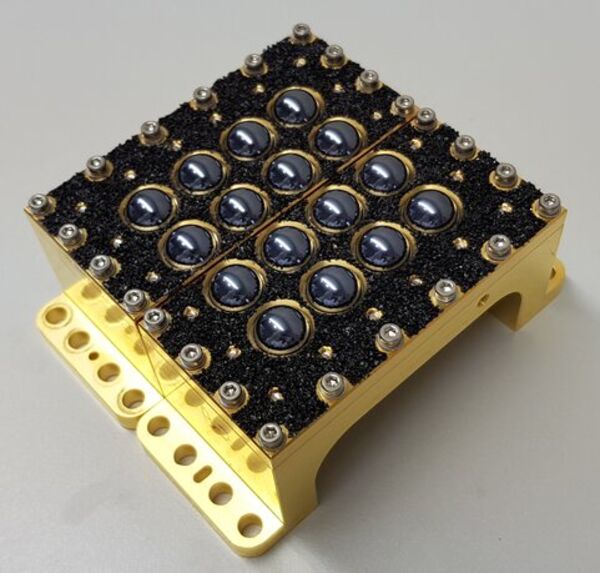
Two new arrays complete detector for GUSTO mission
"GUSTO is a balloon telescope that will simultaneously map three types of material in the gas and dust between stars. SRON and TU Delft develop all three detector arrays for this NASA mission. The final two flight arrays have now passed their pre-shipment review and are shipped to the University of Arizona for integration into the balloon observatory. Together with the earlier shipped array for 4.7 terahertz, the 1.4 and 1.9 terahertz arrays complete GUSTO's flight detector. NASA's Galactic/extragalactic ULDB Spectroscopic Terahertz Observatory (GUSTO) is a balloon observatory that will drift in the Earth’s atmosphere for over 75 days, at the edge of space at 36 km altitude. The launch is scheduled for December 2021 from Antarctica." [...]

Strongest Magnetic Field in Universe Directly Detected by Insight-HXMT
"The Insight-HXMT team has performed extensive observations of the accreting X-ray pulsar GRO J1008-57 and has discovered a magnetic field of ~1 billion Tesla on the surface of the neutron star. This is so far the strongest magnetic field conclusively detected in the universe. This work, published in The Astrophysical Journal Letters, was primarily conducted by scientists from the Institute of High Energy Physics (IHEP) of the Chinese Academy of Sciences and Eberhard Karls University of Tübingen, Germany. Scientists studied the X-ray pulsar GRO J1008-57 detected by Insight-HXMT during its outburst in August 2017. They discovered for the first time a cyclotron resonant scattering feature (CRSF) at 90 keV at a significance level of > 20σ. (Note that the scientific community confirms a new scientific discovery when its significance level is larger than 5σ.)" [...]
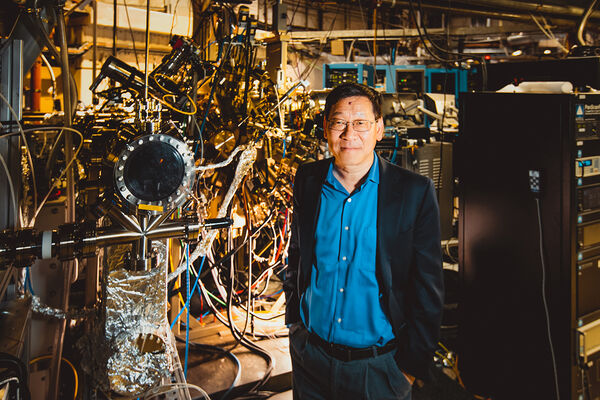
Stanford physicist’s quest for the perfect keys to unlock the mysteries of superconductivity
"For decades Z-X Shen has ridden a wave of curiosity about the strange behavior of electrons that can levitate magnets. Zhi-Xun Shen vividly remembers his middle school physics teacher demonstrating the power of X-rays by removing a chunk of radioactive material from a jar stored in a cabinet, dropping it into a bucket and having students put their hands between the bucket and a phosphor screen to reveal the bones hidden beneath the skin and flesh. “That left an impression,” Shen recalled with a grin. Sometimes he wonders if that moment set the stage for everything that followed. Shen did not, he admits, have a strong interest in physics. There wasn’t much incentive to study in mid-1970s China." [...]
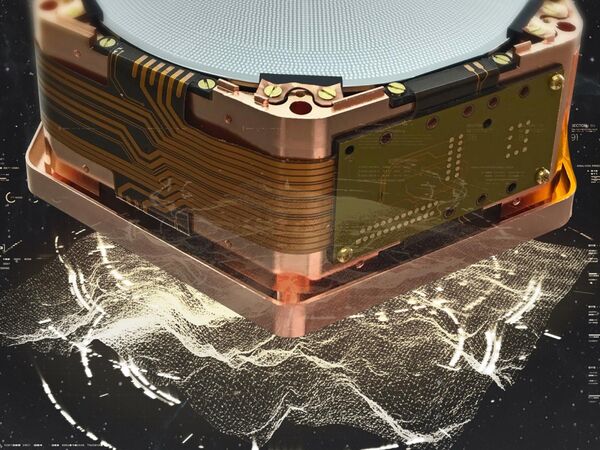
Natural Radiation Can Interfere with Quantum Computers
"A multi-disciplinary research team has shown that radiation from natural sources in the environment can limit the performance of superconducting quantum bits, known as qubits. The discovery, reported today in the journal Nature, has implications for the construction and operation of quantum computers, an advanced form of computing that has attracted billions of dollars in public and private investment globally. The collaboration between teams at the U.S. Department of Energy’s Pacific Northwest National Laboratory (PNNL) and the Massachusetts Institute of Technology (MIT), helps explain a mysterious source of interference limiting qubit performance. “Our study is the first to show clearly that low-level ionizing radiation in the environment degrades the performance of superconducting qubits,” said John Orrell, a PNNL research physicist, a senior author of the study, and an expert in low-level radiation measurement. “These findings suggest that radiation shielding will be necessary to attain long-sought performance in quantum computers of this design.” Natural radiation wreaks havoc with computers Computer engineers have known for at least a decade that natural radiation emanating from materials like concrete and pulsing through our atmosphere in the form of cosmic rays can cause digital computers to malfunction. But digital computers aren’t nearly as sensitive as a quantum computer." [...]
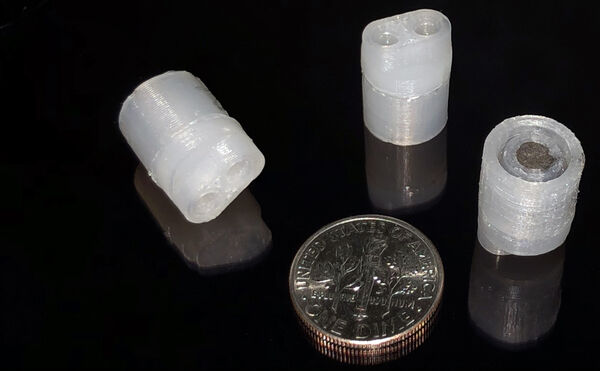
3D printing a miniature magnetic pump
"A new miniature pump — compact, valveless, and operated magnetically — demonstrates the broad capabilities of devices manufactured by 3D printing. Measuring only 1 centimeter in volume, the pump was fabricated in 75 minutes in a single process using multiple materials that cost less than $3.89 per unit. It can move both liquids and gases using less power and experiencing less clogging than standard manufactured pumps of this size. One of the pump designs is the first demonstration of a magnetic, multi-material pump 3D printed monolithically — all in one piece. Luis Fernando Velásquez-García, principal research scientist at MIT’s Microsystems Technology Laboratories (MTL), led the team that built the pump. He says the efficient and portable pump could be used in applications “from fuel cells to power generation to heat exchangers” that cool computer chips." [...]
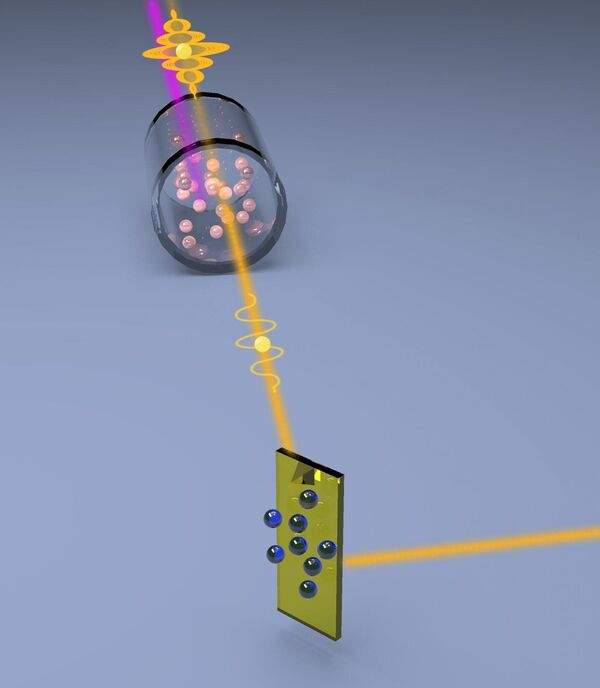
Quantum light squeezes the noise out of microscopy signals
"Researchers at the Department of Energy’s Oak Ridge National Laboratory used quantum optics to advance state-of-the-art microscopy and illuminate a path to detecting material properties with greater sensitivity than is possible with traditional tools. “We showed how to use squeezed light – a workhorse of quantum information science – as a practical resource for microscopy,” said Ben Lawrie of ORNL’s Materials Science and Technology Division, who led the research with Raphael Pooser of ORNL’s Computational Sciences and Engineering Division. “We measured the displacement of an atomic force microscope microcantilever with sensitivity better than the standard quantum limit.” Unlike today’s classical microscopes, Pooser and Lawrie’s quantum microscope requires quantum theory to describe its sensitivity. The nonlinear amplifiers in ORNL’s microscope generate a special quantum light source known as squeezed light. “Imagine a blurry picture,” Pooser said. “It’s noisy and some fine details are hidden." [...]
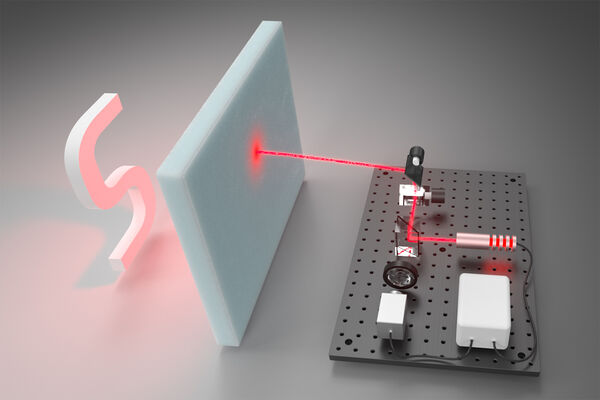
Stanford researchers devise way to see through clouds and fog
"Using a new algorithm, Stanford researchers have reconstructed the movements of individual particles of light to see through clouds, fog and other obstructions. Like a comic book come to life, researchers at Stanford University have developed a kind of X-ray vision – only without the X-rays. Working with hardware similar to what enables autonomous cars to “see” the world around them, the researchers enhanced their system with a highly efficient algorithm that can reconstruct three-dimensional hidden scenes based on the movement of individual particles of light, or photons. In tests, detailed in a paper published Sept. 9 in Nature Communications, their system successfully reconstructed shapes obscured by 1-inch-thick foam. To the human eye, it’s like seeing through walls. “A lot of imaging techniques make images look a little bit better, a little bit less noisy, but this is really something where we make the invisible visible,” said Gordon Wetzstein, assistant professor of electrical engineering at Stanford and senior author of the paper." [...]
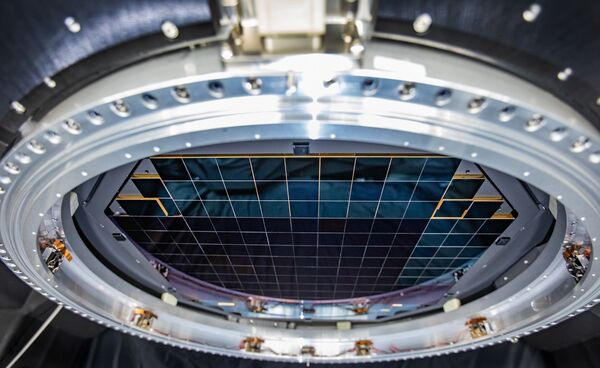
Sensors of world’s largest digital camera snap first 3,200-megapixel images at SLAC
"The camera will explore cosmic mysteries as part of the Rubin Observatory’s Legacy Survey of Space and Time. Crews at the Department of Energy’s SLAC National Accelerator Laboratory have taken the first 3,200-megapixel digital photos – the largest ever taken in a single shot – with an extraordinary array of imaging sensors that will become the heart and soul of the future camera of Vera C. Rubin Observatory. The images are so large that it would take 378 4K ultra-high-definition TV screens to display one of them in full size, and their resolution is so high that you could see a golf ball from about 15 miles away. These and other properties will soon drive unprecedented astrophysical research. Next, the sensor array will be integrated into the world’s largest digital camera, currently under construction at SLAC. Once installed at Rubin Observatory in Chile, the camera will produce panoramic images of the complete Southern sky – one panorama every few nights for 10 years." [...]
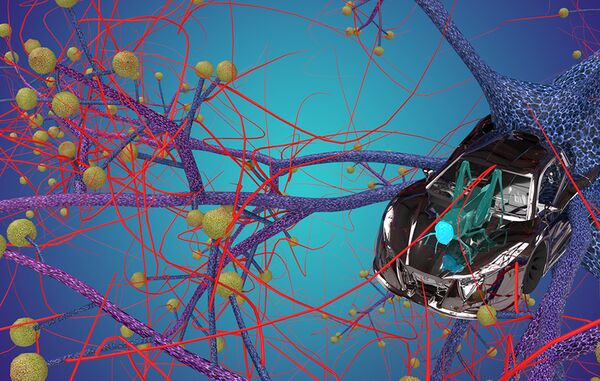
Locust swarm could improve collision avoidance
"Plagues of locusts, containing millions of insects, fly across the sky to attack crops, but the individual insects do not collide with each other within these massive swarms. Now a team of engineers is creating a low-power collision detector that mimics the locust avoidance response and could help robots, drones and even self-driving cars avoid collisions. "We are always looking for animals with unusual abilities, ones that do something better than humans," said Saptarshi Das, assistant professor of engineering science and mechanics. "Insect vision is something people use regularly to design automatic systems because they fly and don't collide, but then we found locusts are unique." Locusts are unusual because they use a single, specialized neuron, called the Lobula Giant Movement Detector (LGMD), to avoid collisions. "So we started looking at how it works and, locusts are just incredible," said Das." [...]
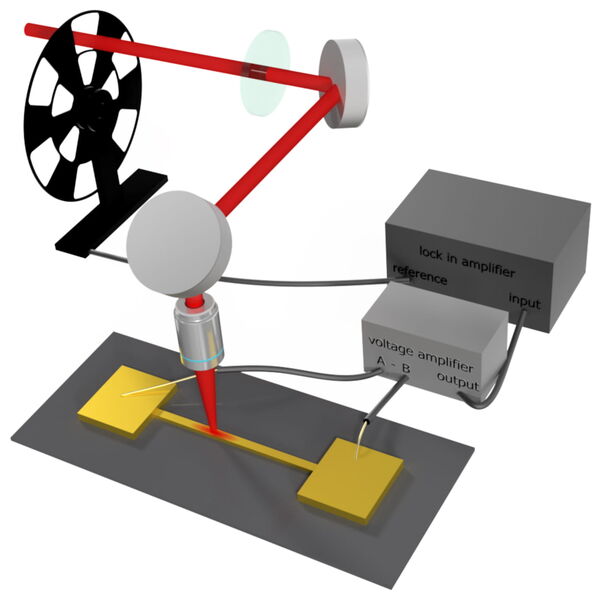
Boundaries no barrier for thermoelectricity
"Rice researchers find potentially useful electrical phenomenon in gold nanowires. Though the Summer Olympics were postponed, there’s at least one place to see agile hurdlers go for the gold. You just need a way to view these electron games. Using a novel optical detection system, researchers at Rice University found that electricity generated by temperature differences doesn’t appear to be affected measurably by grain boundaries placed in its way in nanoscale gold wires, while strain and other defects in the material can change this “thermoelectric” response. The phenomenon could allow for the detection of crystalline defects in conducting materials that are difficult to spot and characterize with even the most advanced microscopic methods. The result was a surprise to researchers led by Rice physicist Doug Natelson and doctoral alumna Charlotte Evans, now a staff scientist at Sandia National Laboratories, who pursued the explanation after seeing measurements they couldn’t explain a few years ago." [...]

Lightweight green supercapacitors could charge devices in a jiffy
"In a new study, researchers at Texas A&M University have described their novel plant-based energy storage device that could charge even electric cars within a few minutes in the near future. Furthermore, they said their devices are flexible, lightweight and cost-effective. “Integrating biomaterials into energy storage devices has been tricky because it is difficult to control their resulting electrical properties, which then gravely affects the devices’ life cycle and performance. Also, the process of making biomaterials generally includes chemical treatments that are hazardous,” said Dr. Hong Liang, Oscar S. Wyatt Jr. Professor in the J. Mike Walker '66 Department of Mechanical Engineering. “We have designed an environmentally friendly energy storage device that has superior electrical performance and can be manufactured easily, safely and at much lower cost.” Their research is outlined in the June issue of the journal Energy Storage." [...]
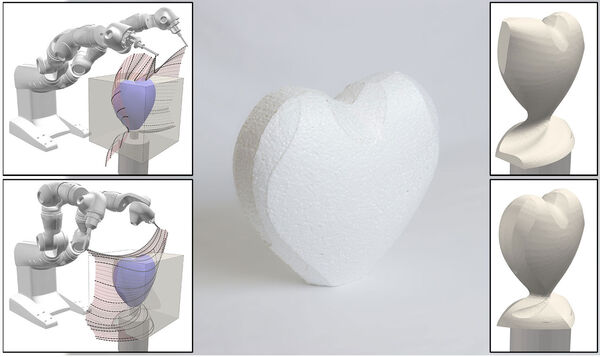
A robot that controls highly flexible tools
"How do you calculate the coordinated movements of two robot arms so they can accurately guide a highly flexible tool? ETH researchers have integrated all aspects of the optimisation calculations into an algorithm. The hot-wire cutter will be used, among other things, to develop building blocks for a mortar-free structure. A newborn moves its arms and hands largely in an undirected and random manner. It has to learn how to coordinate them step by step. Years of practice are required to master the finely balanced movements of a violinist or calligrapher." [...]
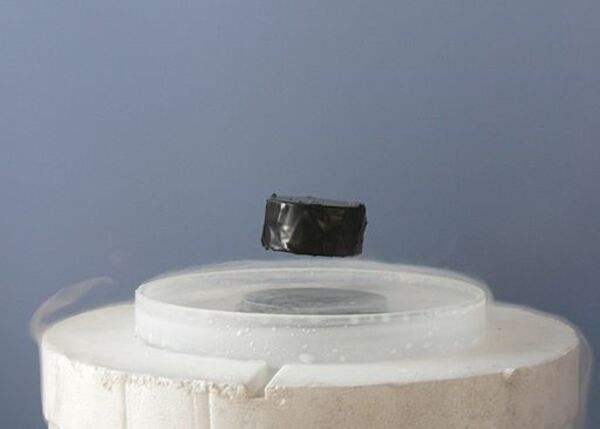
Superconductors are Super Resilient to Magnetic Fields
"A new mechanism is proposed by the University of Tsukuba to explain the resilience of superconductors after temporary exposure to a magnetic field, providing a potential route to lossless electricity transmission Tsukuba, Japan – A researcher at the University of Tsukuba has offered a new explanation for how superconductors exposed to a magnetic field can recover—without loss of energy—to their previous state after the field is removed. This work may lead to a new theory of superconductivity and a more eco-friendly electrical distribution system. Superconductors are a class of materials with the amazing property of being able to conduct electricity with zero resistance. In fact, an electrical current can circle around a loop of superconducting wire indefinitely. The catch is that these materials must be kept very cold, and even so, a strong magnetic field can cause a superconductor to revert back to normal. It was once assumed that the superconducting-to-normal transition caused by a magnetic field could not be reversed easily, since the energy would be dissipated by the usual process of Joule heating." [...]
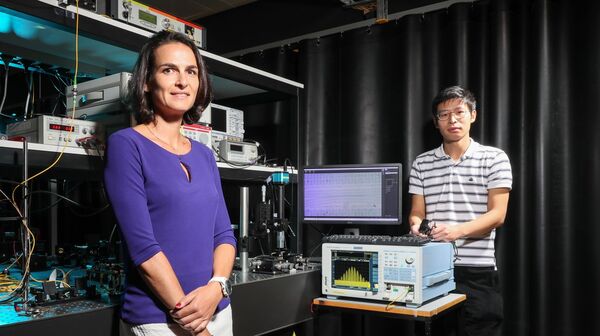
Reconfiguring microwave photonic filters without an external device
"Researchers from EPFL's Photonics Systems Lab have come up with a way of reconfiguring microwave photonic filters without the need for an external device. This paves the way for more compact, environmentally friendly filters that will be more practical and cheaper to use. Potential applications include detection and communications systems. The researchers' findings have recently been published in Nature Communications. Photons look set to replace electrons in countless tasks, since they move faster and consume less energy. These tiny light particles also have the added benefit of being surprisingly flexible – their frequency range is 1,000 to 10,000 times larger than that of electrons." [...]
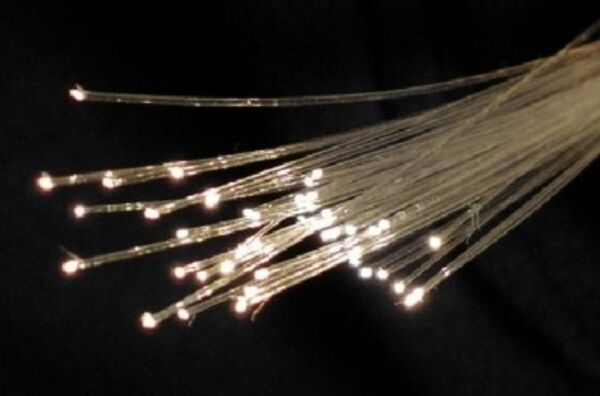
Brazilian researcher creates an ultra-simple inexpensive method to fabricate optical fiber
"A novel process to fabricate special optical fiber that is far simpler, faster and cheaper than the conventional method has been developed by Cristiano Cordeiro, a researcher and professor at the University of Campinas’s Physics Institute (IFGW-Unicamp) in the state of São Paulo, Brazil. Cordeiro created the innovation during a research internship at the University of Adelaide in Australia, supported by a scholarship from FAPESP and by a partnership with his host, Heike Ebendorff-Heidepriem. An article signed by them and a third collaborator is published in Scientific Reports. “The conventional process requires very large and expensive machinery and takes almost a week. Our process can be completed with bench-mounted equipment that’s at least 100 times cheaper and takes less than an hour from feedstock to end-product. It will enable many more researchers and labs to produce their own optical fiber,” Cordeiro told Agência FAPESP." [...]
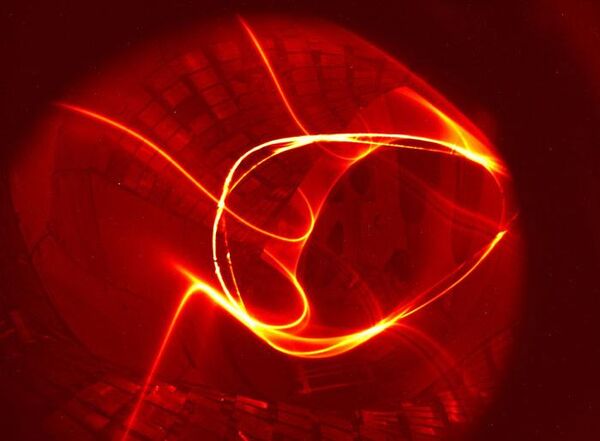
Revised code could help improve efficiency of fusion experiments
"An international team of researchers led by the U.S. Department of Energy’s (DOE) Princeton Plasma Physics Laboratory (PPPL) has upgraded a key computer code for calculating forces acting on magnetically confined plasma(link is external) in fusion energy experiments. The upgrade will be part of a suite of computational tools that will allow scientists to further improve the design of breakfast-cruller-shaped facilities known as stellarators(link is external). Together, the three codes in the suite could help scientists bring efficient fusion reactors closer to reality. The revised software lets researchers more easily determine the boundary of plasma in stellarators. When used in concert with two other codes, the code could help find a stellarator configuration that improves the performance of the design. The two complementary codes determine the optimal location for the plasma in a stellarator vacuum chamber to maximize the efficiency of the fusion reactions, and determine the shape that the external electromagnets must have to hold the plasma in the proper position." [...]

Wool-like material can remember and change shape
"Material could be used in smart textiles, medical devices and more As anyone who has ever straightened their hair knows, water is the enemy. Hair painstakingly straightened by heat will bounce back into curls the minute it touches water. Why? Because hair has shape memory. Its material properties allow it to change shape in response to certain stimuli and return to its original shape in response to others. What if other materials, especially textiles, had this type of shape memory?" [...]
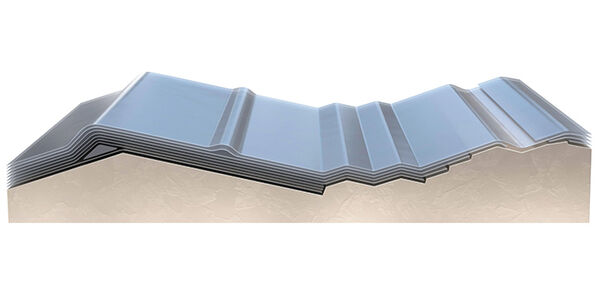
Next-gen smartphones to keep their cool
"The powerful electronics packed inside the latest smartphones can be a significant challenge to keep cool. KAUST researchers have developed a fast and efficient way to make a carbon material that could be ideally suited to dissipating heat in electronic devices. This versatile material could also have additional uses ranging from gas sensors to solar cells. Many electronic devices use graphite films to draw away and dissipate the heat generated by their electronic components. Although graphite is a naturally occurring form of carbon, heat management of electronics is a demanding application and usually relies on use of high-quality micrometer-thick manufactured graphite films. “However, the method used to make these graphite films, using polymer as a source material, is complex and very energy intensive,” says G. Deokar, a postdoc in Pedro Costa's lab, who led the work." [...]
Documentação
A documentação é parte essencial do processo de aprendizagem e a Internet além de artigos interessantes de explorar também tem alguma documentação em formato PDF interessante de ler. Todos os links aqui apresentados são para conteúdo disponibilizado livremente pelo editor do livro.
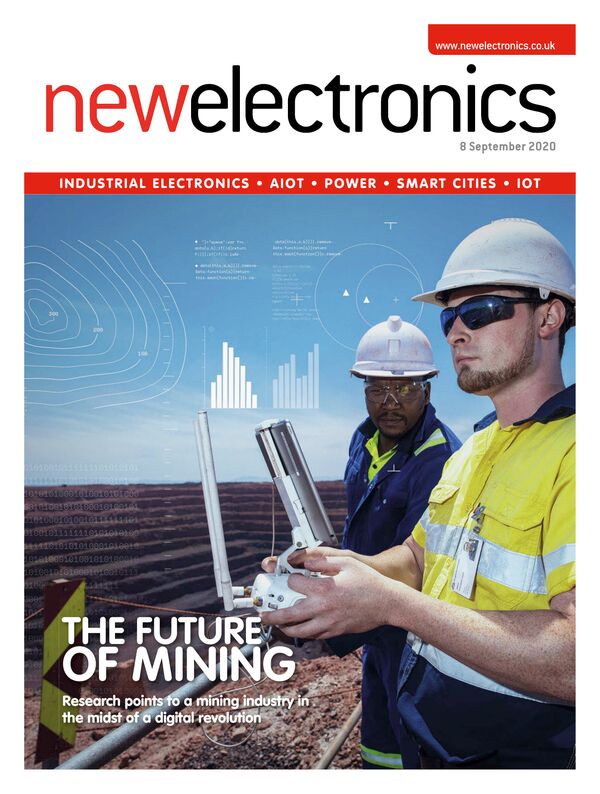
newelectronics 8 Setembro 2020
"New Electronics is a fortnightly magazine focusing on technological innovation, news and the latest developments in the electronics sector. Downloadable as a digital page turner or pdf file, or offered as a hard copy, the New Electronics magazine is available in a format to suit you. " [...]
Projetos Maker
Diversos Projetos interessantes.
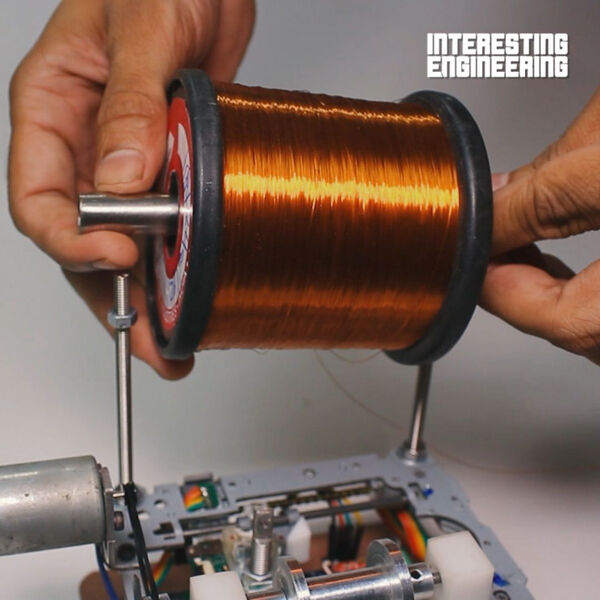
How to Make an Arduino-Based Copper Wire Winding Machine
"Need some copper wire wound? Then why not check out this amazing Arduino-based copper wire winding machine. No longer will you need to do this laborious task by hand. Just let the power of Arduino do the heavy lifting for you. Like most projects of this nature, you'll need a few basic tools (listed below), and some other bits and bobs to get the job done. We have included links to some of the products in case you need to buy them: Main components: 1/8 inch (3mm)) thick acrylic sheet 3/8 inch (10mm) thick MDF board 7/16 inch (12mm) thick wooden board 1 no." [...]
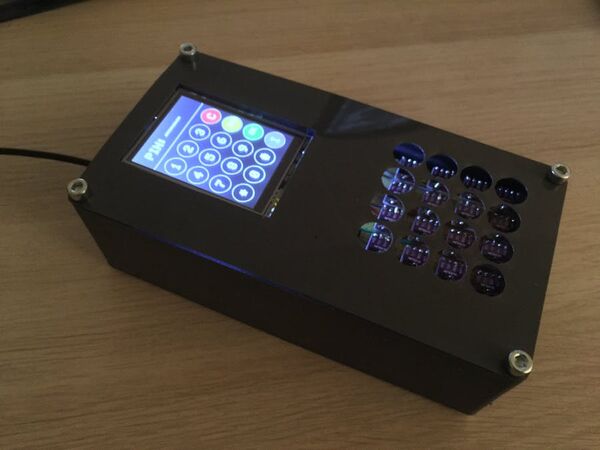
HoverPin
"Touchless PIN pad featuring ToF-sensors, 1D-gesture detection and audio-visual feedback. The idea was to create a touchless PIN pad. There are 4 components that comprise the system: Arduino MKR 1010 MCP23017 port multiplier Seeedstudio 2.8 Tft Display DFPlayer mp3 / wave player + speaker" [...]
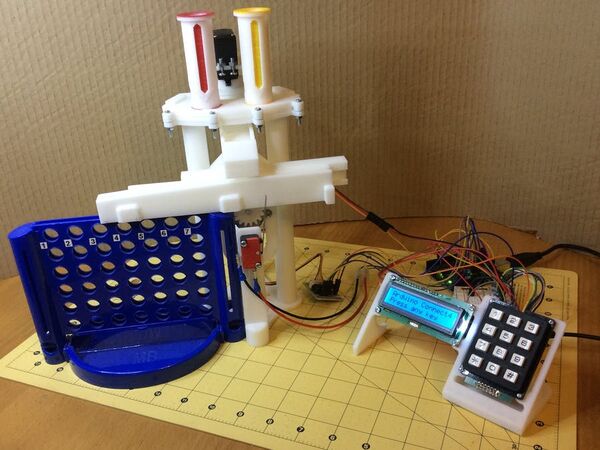
Connect 4 Playing Machine
"A 3D printed machine controlled by an Arduino that plays Connect 4. These instructions describe the making, assembly and workings of a Connect 4 game created for use with an Arduino microcontroller. The game consists of a purchased game board, 3D printed parts and electrical components to create a machine that plays the game, it is controlled by the Arduino and played by computer or human players. " [...]
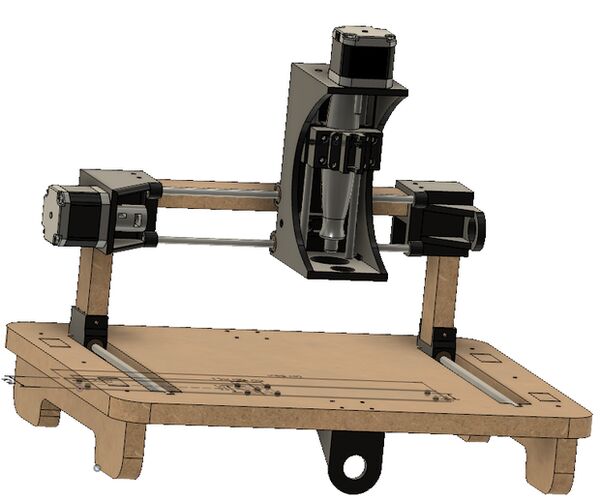
Simple CNC From Scrap Printers
"After building my 3D printer out of old printers and MDF and using it for a few years, I want to expand my machine shop with a CNC machine. Before to go and buy expensive aluminium extrusions and electronics, I decided to build a small machine out of the parts I had lying around from my 3D printer project and printer dismantelement.I used 6mm smooth rods and brass bearings pretty common in paper printers as guides for my axes, M6 threaded rods to drive those axes, the whole structure is made from 16 mm thick MDF and 3D printed parts assembled with common M3 countersunk screws from the hardware store. The machine is controled using an Arduino Uno and a CNC shield running grbl. The whole machine was designed on Fusion 360. All the parts plans for cutting and printing are available on my thingiverse account : https://www.thingiverse.com/thing:4440477 , (pdf and stl files are available as well as Fusion 360 archives) Supplies: Electronics : -3 NEMA 17 stepper motors -Arduino Uno -Arduino CNC Shield -3 stepper drivers (A4988, DRV8825, TMC...) -OPTIONNAL 4 endstop switches 12,6 x 6,5 x 5,7 mm (you can get them from old mouses) -12V DC 200W power supply Mecanics : -400*600 16 mm MDF board -12 brass bearings (10mm external diameter, 6 mm internal diameter, 8mm length, 2 mm thick 14mm diameter flange -2x 6 mm smooth rods 222 mm long -2x 6 mm smooth rods 232 mm long -2x 6 mm smooth rods 150 mm long - M3 countersunk screws -M3 6mm inserts -1 m M6 threaded rod -3x 5 to 6 mm shaft couplers Printed Parts -2 (1 mirrored on y) CNC_y_brass_linear_bearing_mount_x2_MIRROR1 -1 CNC_dremel_flexible_clamp_x1 -1 CNC_x_bearing_mount_x1 -1 CNC_y_bearing_mount_x1 -1 CNC_y_M6_nut_mount_x1 -1 CNC_y_motor_mount_x1 -1 CNC_z_carriage_x1 -1 CNC_z_M6_nut_mount_x1 -1 CNC_x_carriage_x1 -1 CNC_x_motor_mount_x1" [...]

DIY Transparent Side Panel From a Recycled Monitor!
"I saw a really cool video of a PC case called "Snowblind", that had a transparent LCD Screen as a side panel. I was amazed over how cool it was. The only problem was that it was really expensive. Therefore, I tried making my own! In this instructables I will go through how I made it, and how you could make your own. The best of all, since it was made from an old monitor that was thrown away, it was basically free!" [...]
FLEXBALL - a Hundred Pixel Flexible PCB Ball With WiFi
"Hello makers, it's maker moekoe! Flexball is based on a flexible PCB which is equipped with 100 WS2812 2020 addressable LEDs. It is controlled by an ESP8285-01f - the smallest ESP based module by Espressif. Additionally it has an ADXL345 accelerometer sensor on board. Original idea was to display text messages on that round matrix (10x10) but unfortunately the distances of the arms are too big to be read easily (you can watch it in the end of the video). Nevertheless it is the most beautiful LED sculpture I have build so far." [...]
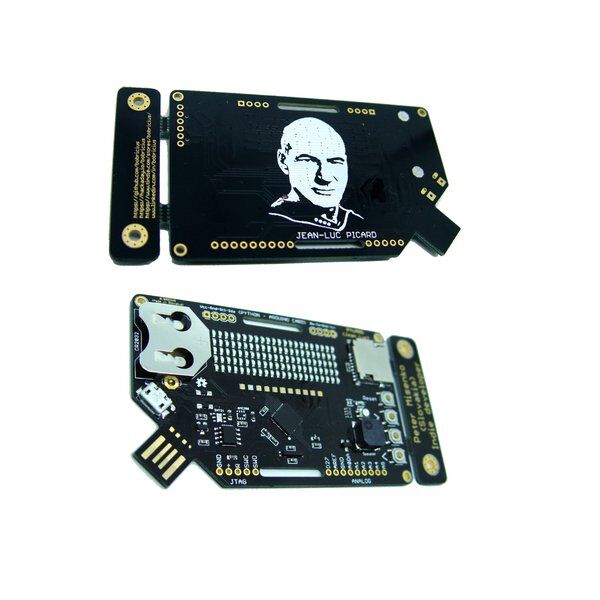
PYcARD (Jean-Luc) - Python+Arduino in card shape
"SamD21 card development platform with 22x5 led matrix display, sd card, battery, environment sensors - wallet development platform :)- badge / wrist band holes ( wearable )- compatible board with micropython (CircuitPython) - extra thin Display from here https://hackaday.io/project/18014-5-alphabets-charlieplexed-matrix-display-22x5- I2C header for extra sensors ( TOL distance, pressure, compass, gas )- DS3231 > precise RTC- SHT21 > temperature, humidity- BME280 > temperature, humidity, atmospheric pressure ... maybe BME680 soon- RGB led- Power led- 3+1 buttons- micro USB or PCB USB- sd card reader - CR2032 battery optional power supply or DS3231 backup- buzzer- Enig gold 2mm PCB boardEasy program in python, just plug in to USB, you can see mass storage device with .py filesjust change program in notepad ... amazing simple.Or write sketch in arduino IDE :)" [...]
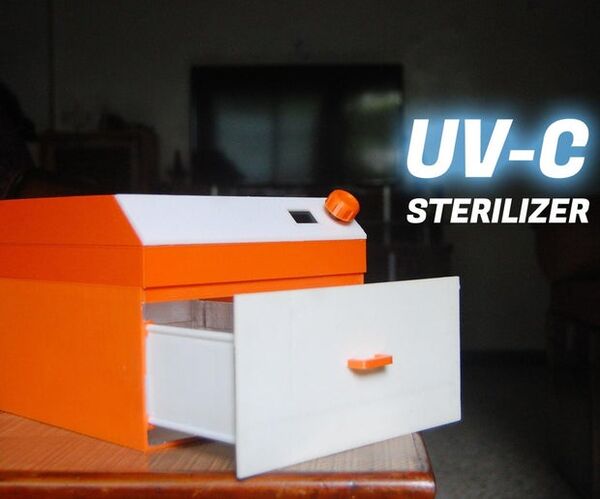
UV-C Sterilizer
"During this pandemic, it has become extremely important to make sure that we take all the necessary steps to keep this coronavirus away from us. Since the vaccines are still under development, the only way to stop the virus is to kill it. The only proven method to kill most of the viruses and germs is by using 'UVC Germicidal Lamp'. Enough exposure to UV-C radiation causes damage to DNA and RNA of the virus so they can't replicate, effectively killing or inactivating a virus. There are several reports claiming the effectiveness of UVC radiation on the new COVID-19. Few big companies have even launched their own UVC sterilizers." [...]
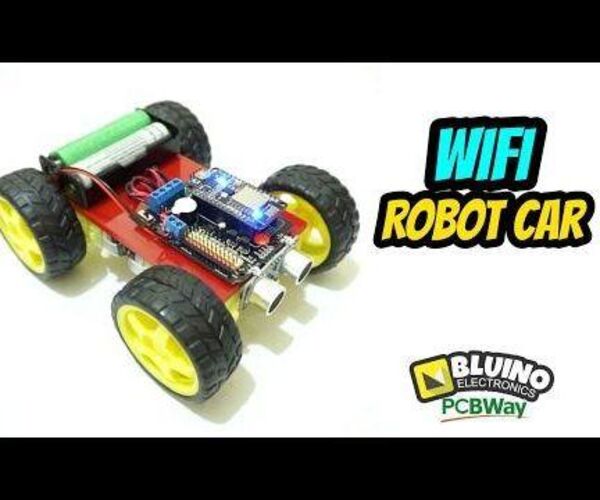
How to Make WiFi Robot Car ESP8266 Nodemcu Wemos
"In this instructable, I will show you how to build WiFi Robot Car ESP8266 NodeMCU/Wemos. Let's get started! Supplies: 1x PCB Nodemcu Motor Shield 1x IC L293D + Socket 16P 1x IC REG. 5V AMS1117 2x Transistor BC527 NPN 1x LED 3mm Red 2x LED 3mm Super Bright White 1x R 100 ohm 1/4W 2x R 1K ohm 1/4W 5x R 10K ohm 1/4W 1x C 100uF/16V 1x Active Buzzer 5V 1x Switch SPDT SS12D00G3 3x Screw Terminal Bock 5mm 2P 4x Male Header 1x40 Pin 1x Female Header 1x40 Pin 1x Ultrasonic sensor HC-SR04 4x TT Geared Motor + Wheel 1x Acrylic 134mm x 76mm 8x Cable AWG24 10cm 2x Rechargeable Battery 18650 3.7V 1x Battery Holder 2x18650 1x USB OTG Adapter 1x Micro USB Cable" [...]
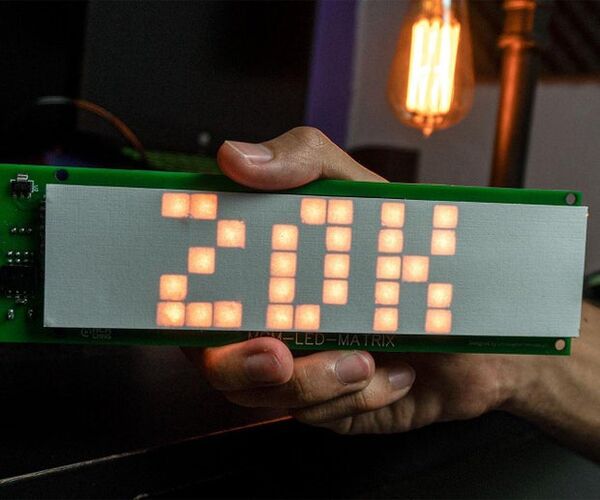
DIY SMART LED MATRIX (ESP8266 + WS2812 / NeoPixels )
"Here is my introduction to a project that I am very excited to show you. It's about a DIY Smart LED Matrix that will let you show on it, data, such as YouTube Stats, your Smart Home Stats, as temperature, humidity, can be a simple clock, or just show text and animations. In this first tutorial I will be making it first test and text showing. If you are a visual learner I know that a video worth more than 1000 words, so here is a Tutorial video. (I am a Spanish speaker, so please consider turning on English subtitles): Hope you to enjoy the project!. " [...]
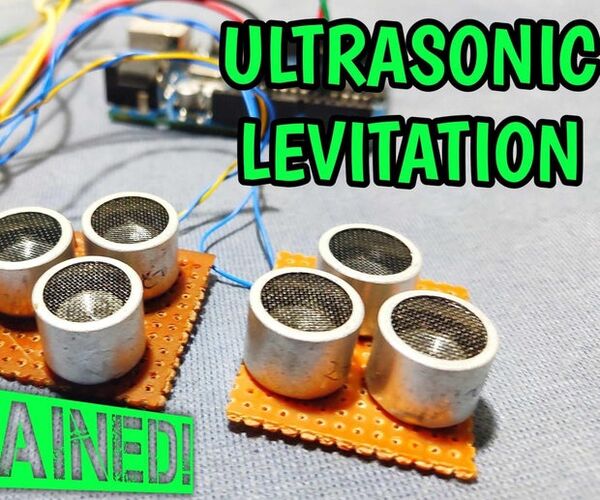
ULTRASONIC LEVITATION Machine Using ARDUINO
"It is very interesting to see something floating in the air or free space like alien spaceships. that is exactly what an anti-gravity project is about. The object (basically a small piece of paper or thermocol) is placed between two ultrasonic transducers which generate acoustic sound waves. The object floats in the air because of these waves which seem to be of anti-gravity. in this tutorial, let's discuss the ultrasonic levitation and let's build a levitation machine using Arduino To understand how acoustic levitation works, you first need to know a little about gravity, air and sound. First, gravity is a force that causes objects to attract one another." [...]
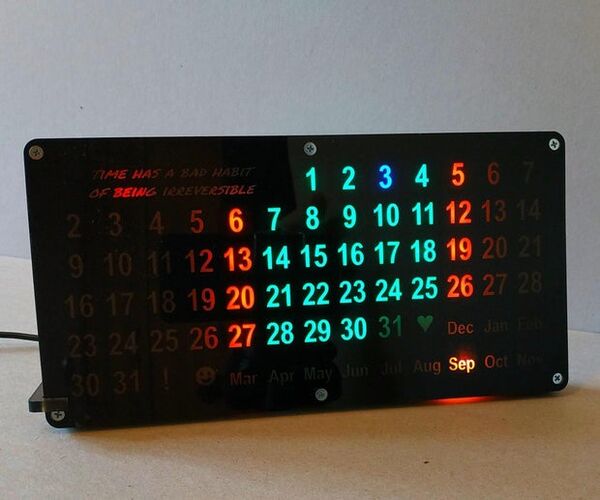
Backlit Automated Perpetual Calendar - a CNC Project
"Another approach on Automated Perpetual Calendar themeI think there is no object more present in our lives than clocks and calendars. The passage of time has always been a major thing in people's lives. I'm no different either, I think this can be seen from the number of my watch projects. Now I would like to show you one of my calendar projects. There are thousands of calendar projects but I have liked perpetual calendars, the idea of reusing a calendar has always seemed special to me, this way I don't have to change my office calendar every year, do I? The downside is that many of these types of calendars are large, cluttered tables that are hard to read and interpret." [...]
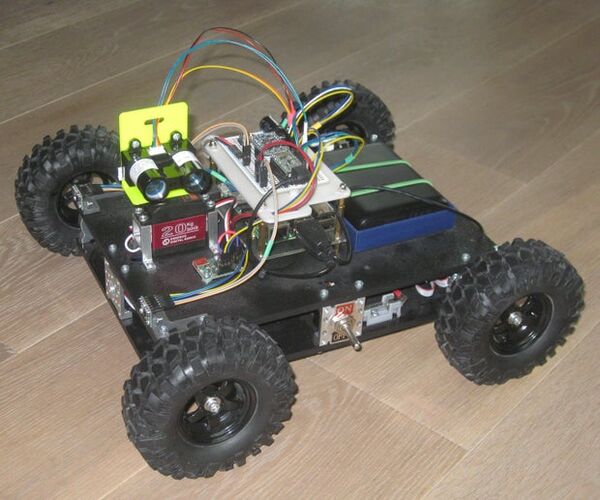
An Autonomous Rover
"The Autonomous Rover travels from one location in my house to another location in my house, with no help from a human. I designed it to experiment in robot autonomy. To perform its task, the AR (short for Autonomous Rover) integrates three major capabilities: Localization — determines its current location in its environment Navigation — determines the optimal path from its current location to a target location Locomotion — moves along the path from the current location to the target location Three things…. Sounds pretty simple, but the devil is in the details. With my fully custom design, using hobby-grade mechanical and electronic components, and my limited experience in autonomous technologies, it proved difficult, but both fun and educational. In truth, the AR is still a work in progress." [...]
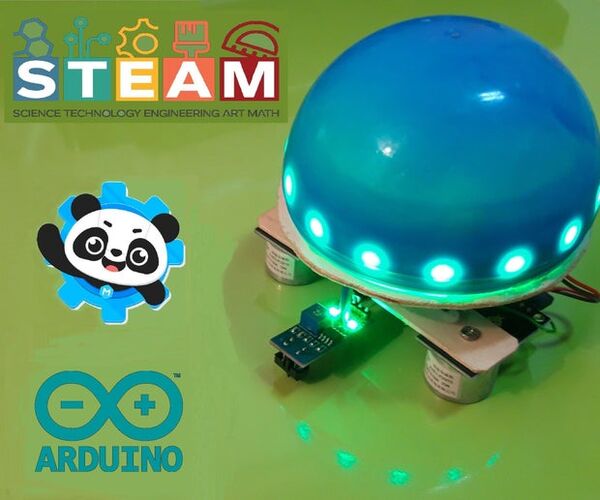
MMR: Magnetic Motion Robot
"Magnetic Motion Robot (MMR) is a DIY STEAM education robot thinked to build children’s interest in science and cultivate their essential skills of coding using mBlock MMR is an original robot can only move in a metalic surface using eletromagnets. Equipped with an IR sensor, a line follower sensor and a buzzer, MMR could be a treasure trove of fun with easy coding, empowering children with the skills to turn their imagination into reality and experience the delight out of their achievement. Using Makeblock, programming is as simple as assembling building blocks. I hope you like. Supplies: Arduino MICRO (ATmega32U4) (2) micro servos (3) electromagnets (1) IR sensor (1) buzzer (1) led strip (1) step up boost converter (DC-DC) (MT3608) (1) micro USB 4,7V battery charger (1) 4,7V battery 1200 mah Magnetic board Plywood Plastic Ball Wires" [...]
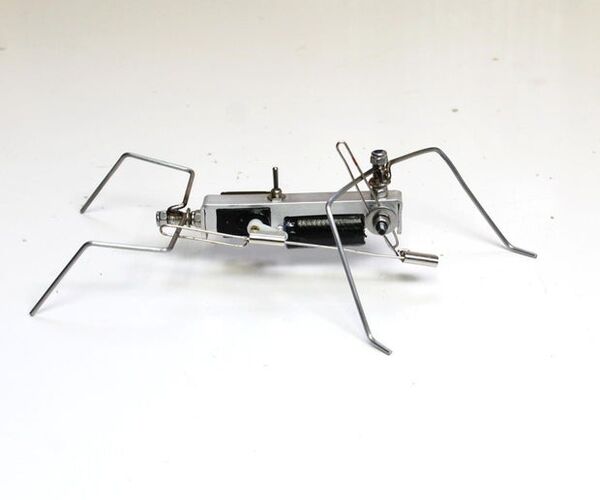
Walking Robot Using 1 Servo Motor
"I've been wanting to build this walker robot even since I saw it on YouTube. After a little searching I found some more information on it and decided to make my own. The goal I had building this walker was to try and make it as small as I possibly could. I wanted it to fit in the palm of my hand and although I have pretty big palms, the legs just hang over. The robot itself runs off a micro servo which has been modified to turn continuously. As the servo spins, it moves a couple of linkages which in turn move the back legs up and down and the front legs side to side allowing it to walk." [...]
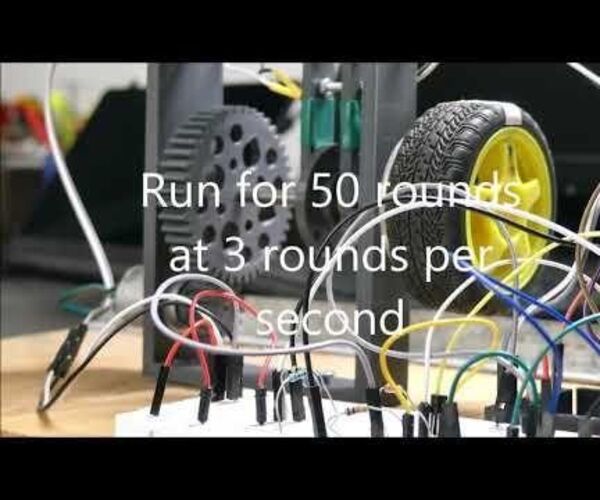
How to Control DC Motors Rotation ?
"Working on a autonomous robot, I needed to be able to control simultaneously two DC motors moves. I already designed a system in july 2016 that runs rather well but I needed to improve speed measurement precision. To do so I restarted from scratch and it was a good opportunity to publish this instructable. Supplies: This system rely on: some mechanical components a simple electronic circuit some Arduino software tools. All that is detailed further in this instructable. Working Principle a wheel with some holes is set on the rotation axis a LED provides an infrared light that goes thru holes each time LED is in front of a hole an infrared receiver provides an electrical signal that depends on the received light a microcontroler monitors the electical signal, counts the nomber of holes detected, compute the instantaneous speed and adjust the motor input voltage to fit with the expectations This instructable demonstrates how to implement the system for only one motor." [...]
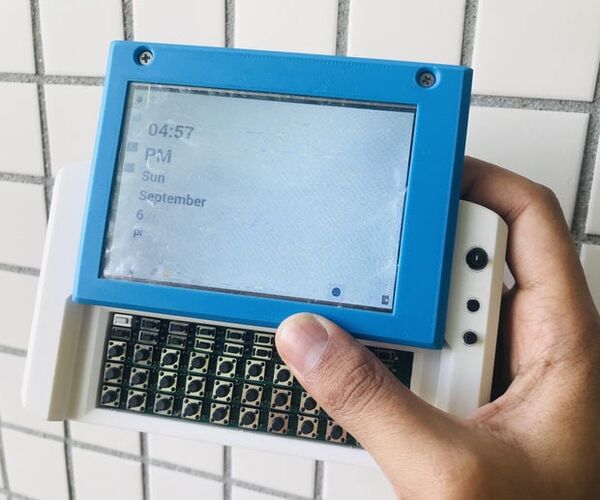
MutantC V3 - Modular and Powerful HandHeld PC
"A Raspberry-pi handheld platform with a physical keyboard, Display and Expansion header for custom boards (Like Arduino Shield). mutantC_V3 is successor of mutantC_V1 and V2. Check out mutantC_V1 and mutantC_V2. https://mutantc.gitlab.io/ https://gitlab.com/mutantC https://www.reddit.com/r/mutantC/ https://matrix.to/#/!dtgavqeIZQuecenMeX:matrix.org. First take a look at this in 3D using AutoDesk Fusion 360 Online here. There are some key features." [...]

ESP32 WiFi Hash Monster
"WiFi Hash Purple Monster, store EAPOL & PMKID packets in an SD CARD using a M5STACK / ESP32 device. 90% of the code is based on the great PacketMonitor32 from follow on Twitter and the port to M5Stack from macsbug. It was a challenge to see if I could mimic the operation of pwnagotchi follow on Twitter in an ESP32 SoC. When a wifi device connect to an AP with WPA2/PSK instead of sharing the wifi key they exchange 4 EAPOL messages, this method is known as the 4-way handshake, capturing these 4 packets is possible to guess the password using dictonary attacks or brute force attack, recentely there is a more efficent way to calculate the wifi key using just one PMKID packet. Purple Hash Monster capture all the EAPOL / PMKID packets on the SD Card for further analysis. Short press on first button will change the WiFi channel, long press will enable the SD Card and all EAPOL / PMKID will be stored on the SD-Card." [...]
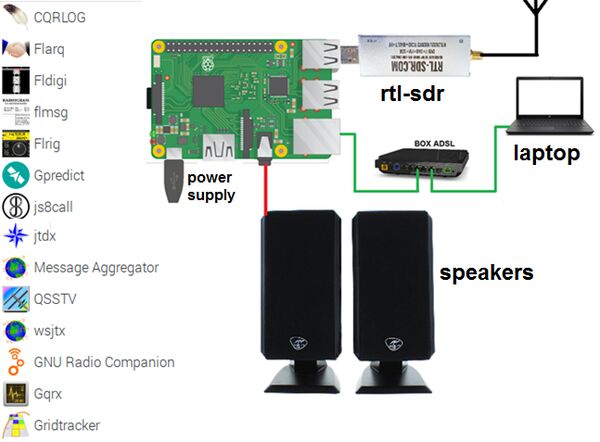
RASPBERRY PI FOR HAM RADIO
"Since 2012, the Raspberry Pi nano computer has become an increasingly important part of the DIY and « maker » community. The increase in power of the Raspberry Pi over the years offers very interesting possibilities for radio amateurs. Indeed, it allows not to permanently monopolize a PC in the decoding of frames with software like WSJT-X, FLDIGI, etc…, without forgetting the possibility to control the Raspberry Pi remotely and thus to be able to work outside the radio shack as I can sometimes do on my couch. Moreover, this nano computer is now widely used in any Hotspot (DMR or D-STAR). I have often asked myself this question and I think it comes from the use of the operating system (OS). When you power on a Raspberry PI, the OS, called Raspbian is stored on a microSD card." [...]
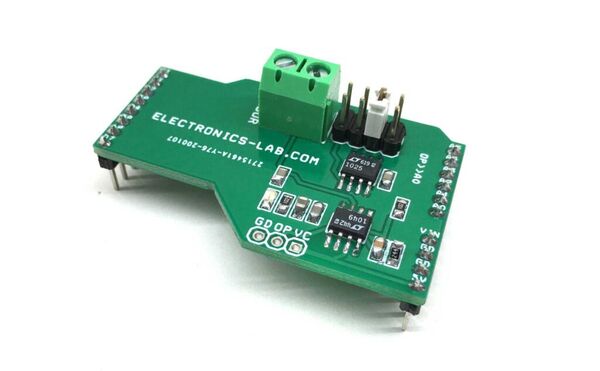
Type K Thermocouple Sensor Amplifier Arduino Shield
"This is a Type K Thermocouple Sensor Amplifier Arduino Shield that enables an Arduino board to acquire temperatures from a thermocouple of type K. The shield works with a single supply and takes 5V DC from the Arduino board, the output of the circuit is 0 to 4V DC for 0-degree centigrade to 400C. The output of the amplifier is connected to the A0 analog pin of Arduino. A typical application of thermocouples is in boilers, soldering stations, and heaters. Also, 3D printers rely on thermocouples to measure the extruder temperature. The K thermocouple has usually two wires, made of Alumel and Chromel that need to be connected with special care: no solder, just use a mechanical connection, therefore it is advisable to use special connectors available for thermocouples. The circuit is built using LTC1049 op-amp and Thermocouple Cold Junction Compensator chip LTC1025." [...]
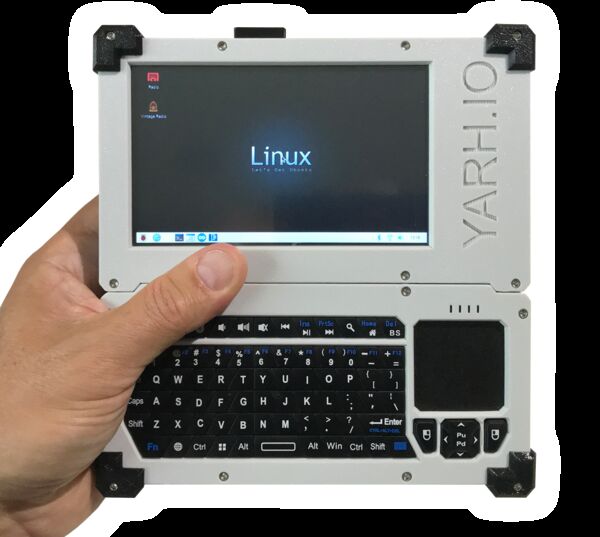
YARH.IO MKI
"YARH.IO is a fully hackable and custamizable Raspberry Pi based handheld, running Raspberry Pi OS and supporting all other Operating Systems available for Raspberry Pi. The dream of a hackable Linux powered handheld has been around for many years, and many attempts have been made to create a working device. While some of the devices have reached the market, none of them withstood the test of real world user experience. YARH.IO project has taken on the challenge of building a fully functioning device by combining the best of Raspberry Pi design and 3D printing technology. This project takes hackability to the next level by ensuring that every single component needed to build YARH.IO can be easily sourced, with no custom PCBs and just a bit of wire soldering required. YARH.IO handheld and its unique modular design with exposed interfaces offers unprecedented connectivity with unlimited platforms and devices." [...]

Home Automation using Bolt Module
"Hey there, in this project I have used Bolt device, Two-way switches and 4 channel-relay module. simple and easy to implement in real life. Hey there, This project is a mixture of projects I saw on you-tube. I have made this project so that our home appliances such as lights, fans, doors, windows etc can be automatically operated with our mobiles with just single touch from all over the world, but yah as this project is based on Inter of Things you will always need a active Wi-Fi connection. One can also operate it with voice commands and if at all your Wi-Fi has some problem I have used two way switches which can operates as a normal switch at that time. In our day-to-day life its very tough to remember things like giving water to plans or closing the window or some times you forget that did I close the lights and fan?" [...]
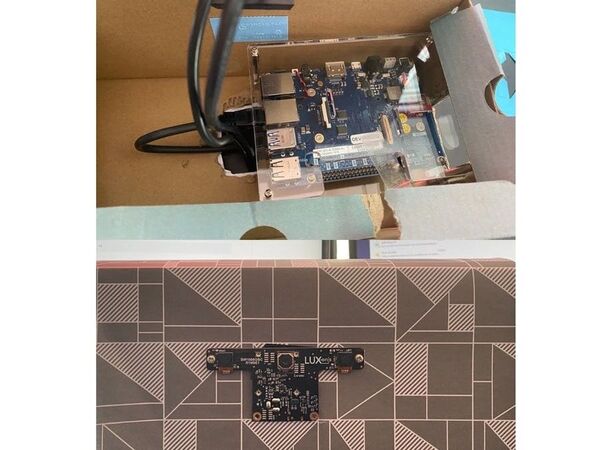
ADLINK Social Distancing Solution
"OpenCV OAK-D camera with ADLINK Edge AI hardware & software to build a social distancing solution. As we deal with these unprecedented times organisations are looking at how people can return to physical shared spaces. A common approach to this solution is to use computer vision to monitor the occupancy of shared spaces in schools, offices and retail stores. But with the technology that is currently available we can take this one step further and monitor the distance between people in these shared spaces. With information about the number of people and the distances between people we can build innovative alerting solutions to notify when good social distancing practices are not being adhered to. The most basic alerting solution is to provide a dashboard with a people counter and distances graph." [...]
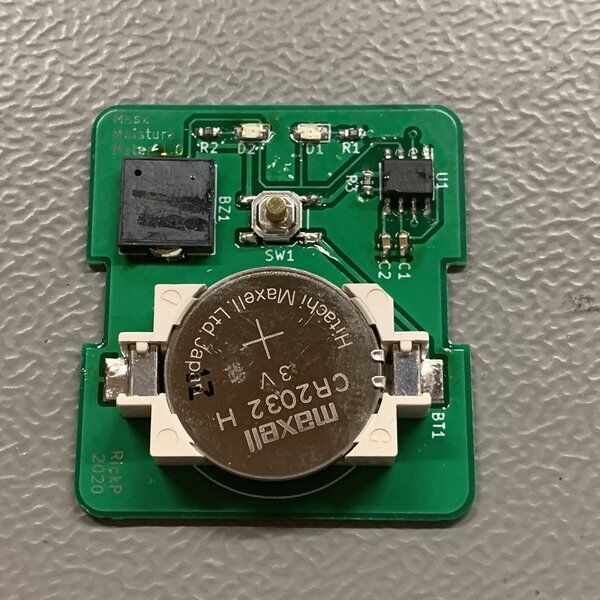
Mask Moisture Meter
"A simple device that measures the moisture of face masks The moisture meter uses a coin cell and a 555 timer to measure the resistance of your mask. It blinks and beeps when the mask is wet. The project on github (https://github.com/RickP/MaskMoistureMeter [https://github.com/RickP/MaskMoistureMeter]) contains all files needed build your own. This device uses a simple 555 timer and some passive components to measure the resistance of cloth. No programming is needed. All components can be ordered from the major distributors." [...]

TM1637 Digital Clock with time setup and alarm functionality
"This is a prototype of the time and alarm setup mechanism which I am planning to use in my next digital clock projects.I hope you find it useful.If you think of any improvements please let me know. I would be more then glad to look into them and potentially incorporate in my code. " [...]

Determining a Plant's Health with TinyML
"Scan the leaves of a plant with an Arduino Nano 33 BLE Sense and train a model to detect if it's diseased. Just like humans, plants can become diseased too. And just like how you might develop a rash from a skin infection, a plant's leaves might become yellowed and/or blotchy from a fungus or other pathogen. So, by leveraging the power of machine learning, colors can be scanned and then used to train a model that can detect when a leaf's color is off. The brain of this project is the Arduino Nano 33 BLE Sense, and it was chosen for several reasons. First, it has a rich set of powerful sensors, including a 9DoF IMU, APDS-9960 (color, gesture, proximity, and brightness), microphone, and a temperature/humidity/pressure sensor combo." [...]
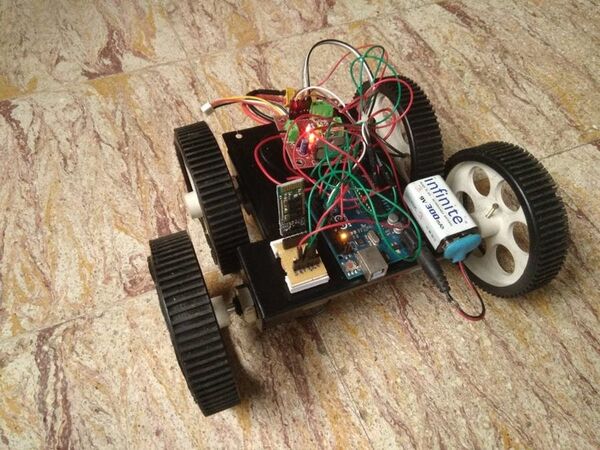
Mind Controlled Robot Using Arduino and Mindflex
"How we created a Mind Controlled Robot using Arduino which was later converted to a wheel chair. It is very clear that EEG sensors and headsets are becoming more commercialized and thus accessible to users for building custom brain-machine interfaces with various functionalities from switching TV channels to controlling wheelchairs as in this case. We decided to take it one step further. Here we will show you how we created a Mind-Controlled Robot using Arduino which was later converted to a wheelchair. " [...]
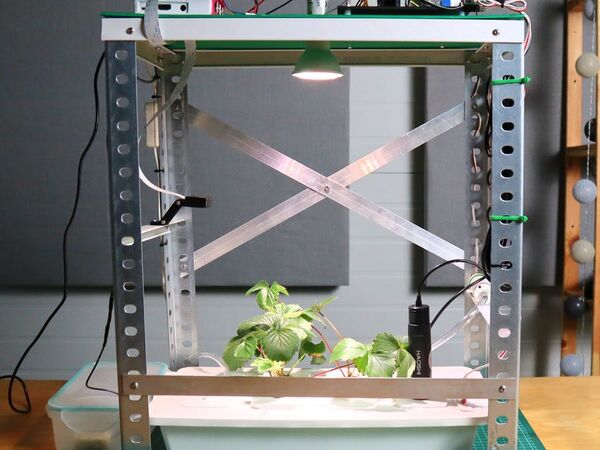
Automated Hydroponic System
"An automated hydroponic system for growing strawberries using Grafana and InfluxDB. Description I've been interested in hydroponics for a while, so I built this as my thesis project. Building it was a fun and challenging process and, to my surprise, in the end I actually got to eat my very own indoor-grown strawberries! Details What can the system do? The system monitors pH, TDS, temperature, humidity and water level. It also includes an air pump for oxygenating the plant roots and a PID controlled peristaltic pump for automatic pH adjustment (which pumps a pH reduction solution)." [...]
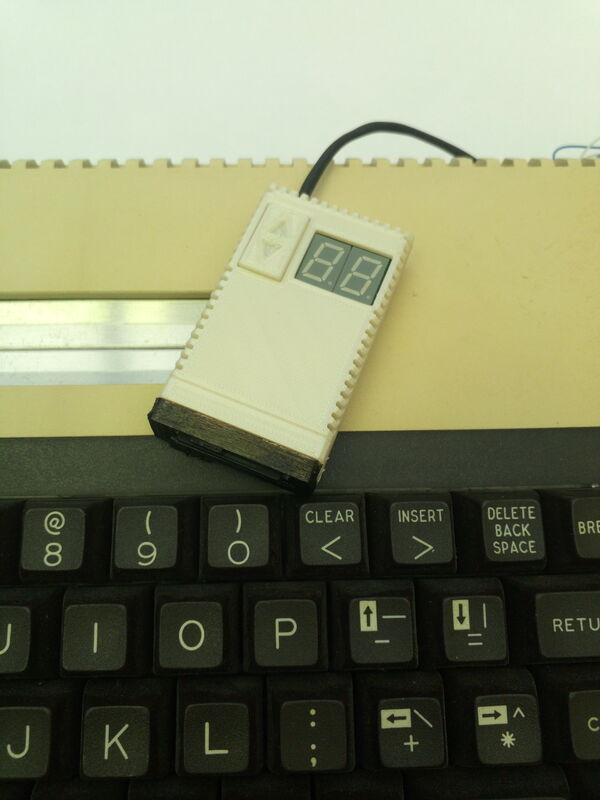
SIO2SD
"An Arduino-based floppy drive emulator for the Atari 8 bit computers. This small Arduino build emulates an Atari 1050 floppy drive to connect to an original Atari 8-bit computer. The program is compatible with most Arduino boards. And for boards based on the Atmega32u4 it also provides various log messages on the serial monitor to help debugging (mainly for my own use). For a breadboard setup like my development device, you will need two push buttons, two 7-digit LEDs and one SDCard socket (with built-in or separate level shifters) and some wires and resistors. The connectivity is pretty standard and you will find the details as comments in the source code." [...]

Touchless Game Dice
"Various types and number of board game dice in one little box, absolutely touchless for virus-free fun! This is an extremely lightweight, compact and portable device. It does precisely what ordinary dice do: The player makes a shuffling motion with his/her hand, the dice shuffles, when the hand is removed, it takes a few seconds to show the output; just as it does when a regular die is released and rolls for a bit before coming to a standstill. Small details like these moments of suspense are also included in this device. It is powered using a normal power bank via a USB cable. Playing board games with your family is a good way to spend time while cooped up at home, and this device ensures there is no spread of viruses by objects in common contact, where generally overlooked things like conventional game dice can be fomites for COVID-19." [...]
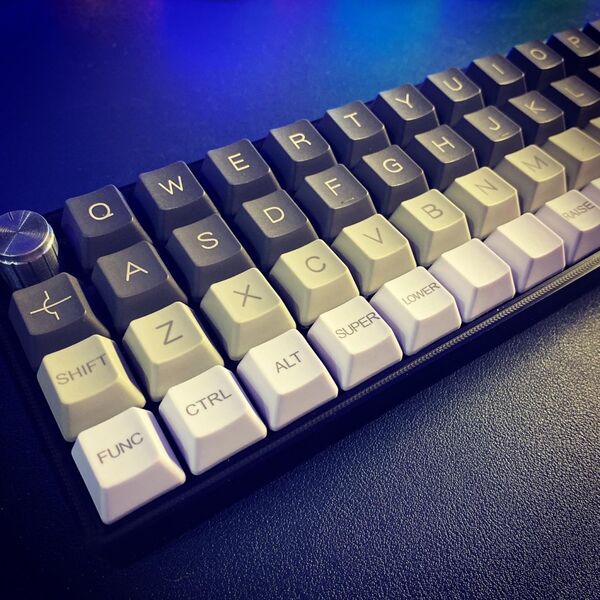
3D Printed Hand Wired 40% Keyboard
"The subject of this blog is a build log, that will cover my build of a 3D printed hand wired 40% keyboard. It will include basic details on 3D printing, hand wiring, general assembly and software programming with QMK along with references to the guides I used. About a month or so ago I was looking around for a new project (as I frequently do) and I stumbled upon a mechanical keyboard sub-reddit. This ended with me in fairly short order, purchasing the parts to build my first keyboard. Skip forward to today and I have just finished building my third full keyboard and three macro-boards. Clearly this hobby is going to be a money sink!" [...]
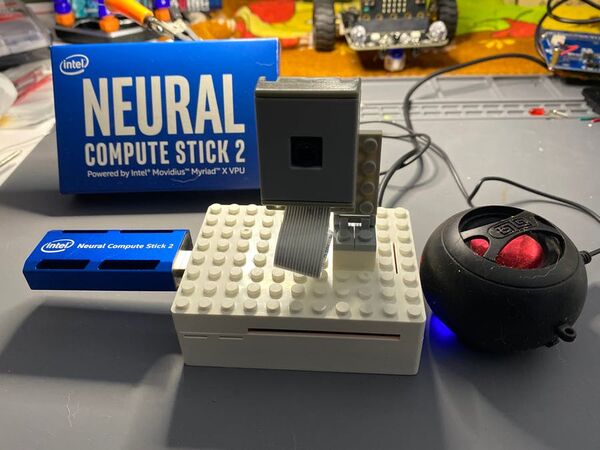
A. Eye - Watch out for vehicles
"A getting started guide of vehicle recognition using OpenVINO on Raspberry Pi and Neural Compute Stick 2. This is a getting started guide for beginners to Intel Compute Stick and OpenVINO. I will be using pre-trained model from model zoo. I am going to build a vehicle alert system should. When a vehicle is approaching, Raspberry Pi will speak out the alert. This could be a very good use-case for visually impaired persons or for bikers who often don't see what's coming from behind." [...]
That's all Folks!



